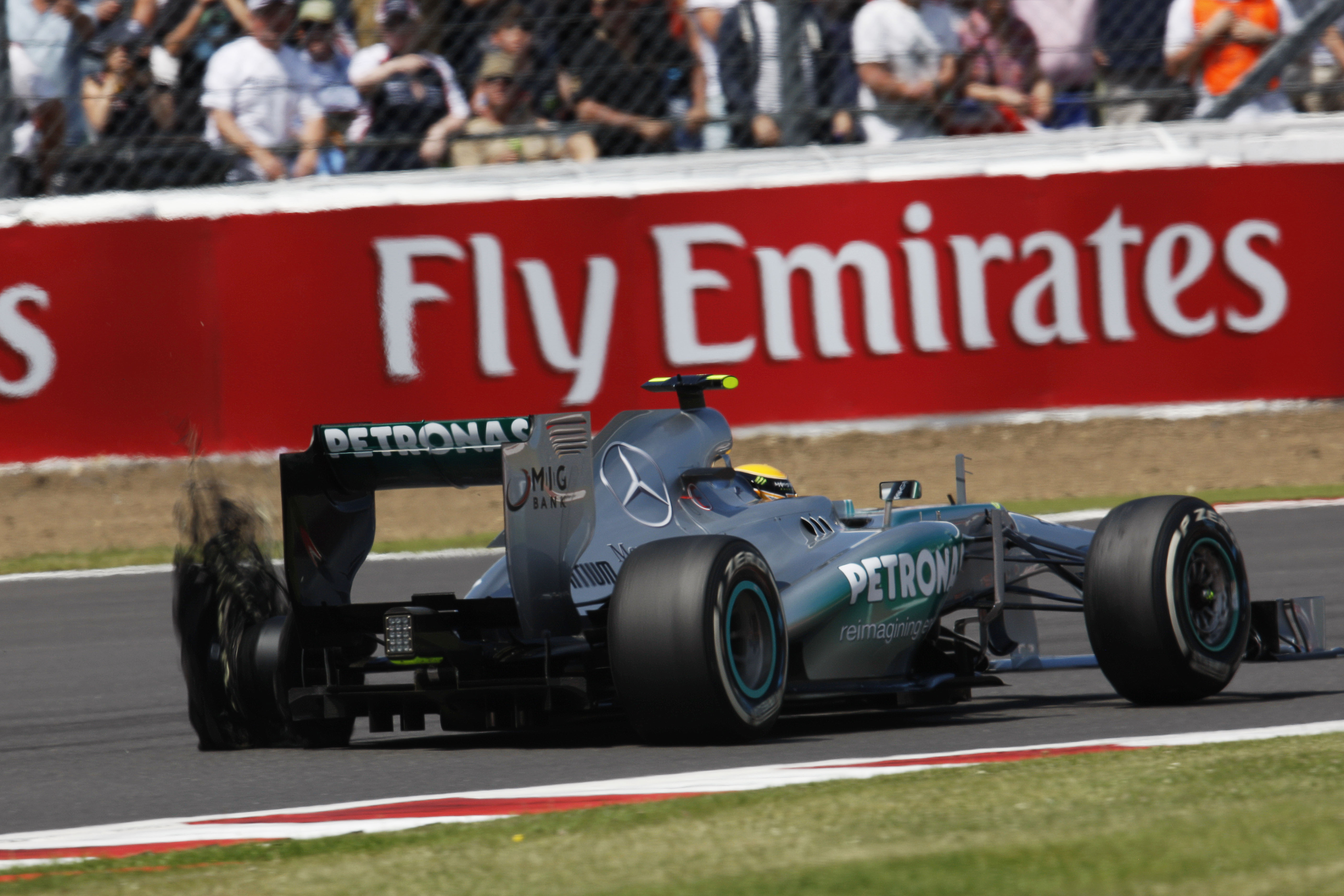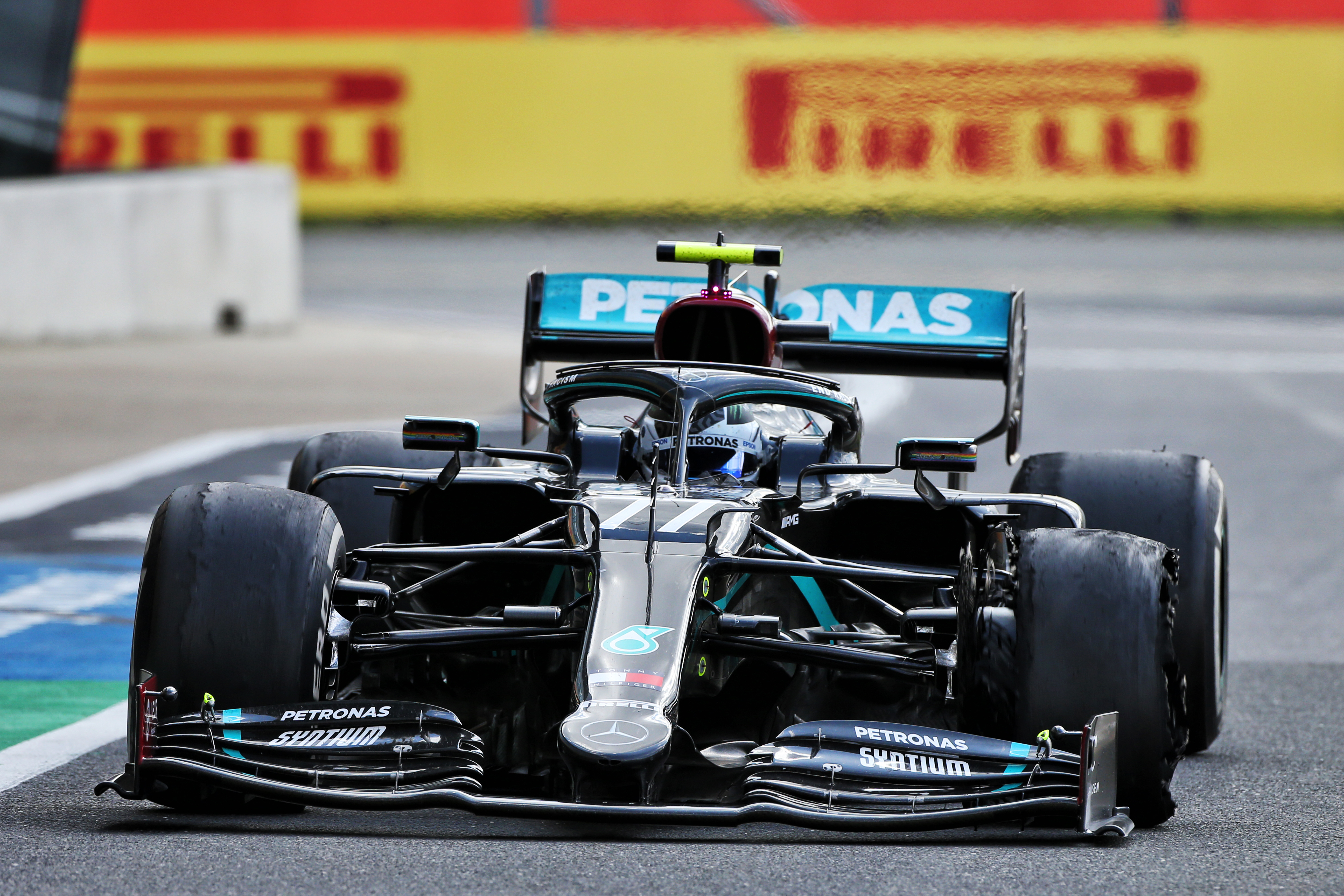Until the last three laps, the British Grand Prix was about as exciting as watching the new and in-progress HS2 railway line rushing through Buckinghamshire and Northamptonshire on its way to wherever.
But the tyre problems that started on lap 50 led to chaos setting in.
First, it was Valtteri Bottas running second that suffered a deflated left front. Then McLaren driver Carlos Sainz Jr, who was running fifth, had the same problem a lap later. And on the last lap, leader Lewis Hamilton suffered the same problem, which might have cost him the race – just as a tyre failure did here in 2013 (pictured below) – but for second-placed Max Verstappen having stopped for new tyres already.

All three were left-front failures, which is no surprise with the fast right-hand corners at Silverstone.
But either way, after everyone other than Romain Grosjean pitted and fitted hard tyres during the safety car interlude for Daniil Kvyat’s crash, it left them with roughly 37 laps to the chequered flag – 33 at racing speed after the safety car came in. It proved to be that bit too far for some.
When Bottas had his problem, Red Bull and Verstappen, who was then running second, had the benefit of a free pitstop. In my humble opinion, Red Bull was right to stop, although if not for making that decision that he would have beaten Hamilton.
As we often say, hindsight is 20-20. In the circumstances, I think he took the safe option and to finish second and pick up the fastest lap was a good end result from a weekend that I’m pretty sure the combination of him, Red Bull and Honda expected more from before seeing the Mercedes’ pace on Friday.
But with six days before the lights go out at Silverstone for the second time this year, what can be done about this tyre situation?
Pirelli’s investigation is ongoing and it might conclude that debris is to blame, as the tyres wear they get more susceptible to cuts and punctures and pieces of carbon are like knives.

It wouldn’t be any surprise if when Pirelli looks at the tyres from the other cars it finds lots of surface cuts. It needs to remember this was lap 50 of a 52-lap race that had various incidents so it shouldn’t expect the tyres to look like new.
Pirelli will also be looking at the tyre structure to see if there is any reason to think that with so many laps on the same set the corner structure of the tyre started to separate.
To cover this I’m pretty sure the first step will be to increase the front tyre pressures slightly, by perhaps 2psi.
This will reduce tyre deflection, which in turn generates shoulder temperature. Also, a small reduction in front camber would reduce the load and deflection on the inner shoulder.
But no teams will want to do this for pace reasons, so here’s an alternative idea that would allow them to keep the set-ups they want and also introduce a little more head scratching for the teams.
For next weekend, the tyre compounds are going to be one step softer. The problems happened on the hardest compound, which they are not going to have available next week, and by going one compound softer we will be seeing faster lap times.

This will induce more load in the tyres, but please don’t change your mind on that Pirelli, it’s time to experiment.
For the soft tyre, introduce a mandatory maximum of 15 laps, for the medium tyre, 20 laps and for the hard tyre, 25 laps.
With that maximum lap allocation, it makes it a two stop race because one stint on mediums and one on hards only adds up to 45 laps. One on soft and one on hards is 40 laps, so you have to do two stops minimum.
Not only would that ensure that there is no repeat of the tyre problems, but it will also create some more varied strategy for the second of the Silverstone double-headers. So that should make it a win/win.
We don’t yet know what the result of Pirelli’s investigation will be and it may well yet be found to be down to debris, but even if there’s not a safety reason this is a good way to liven up the second race next weekend.



